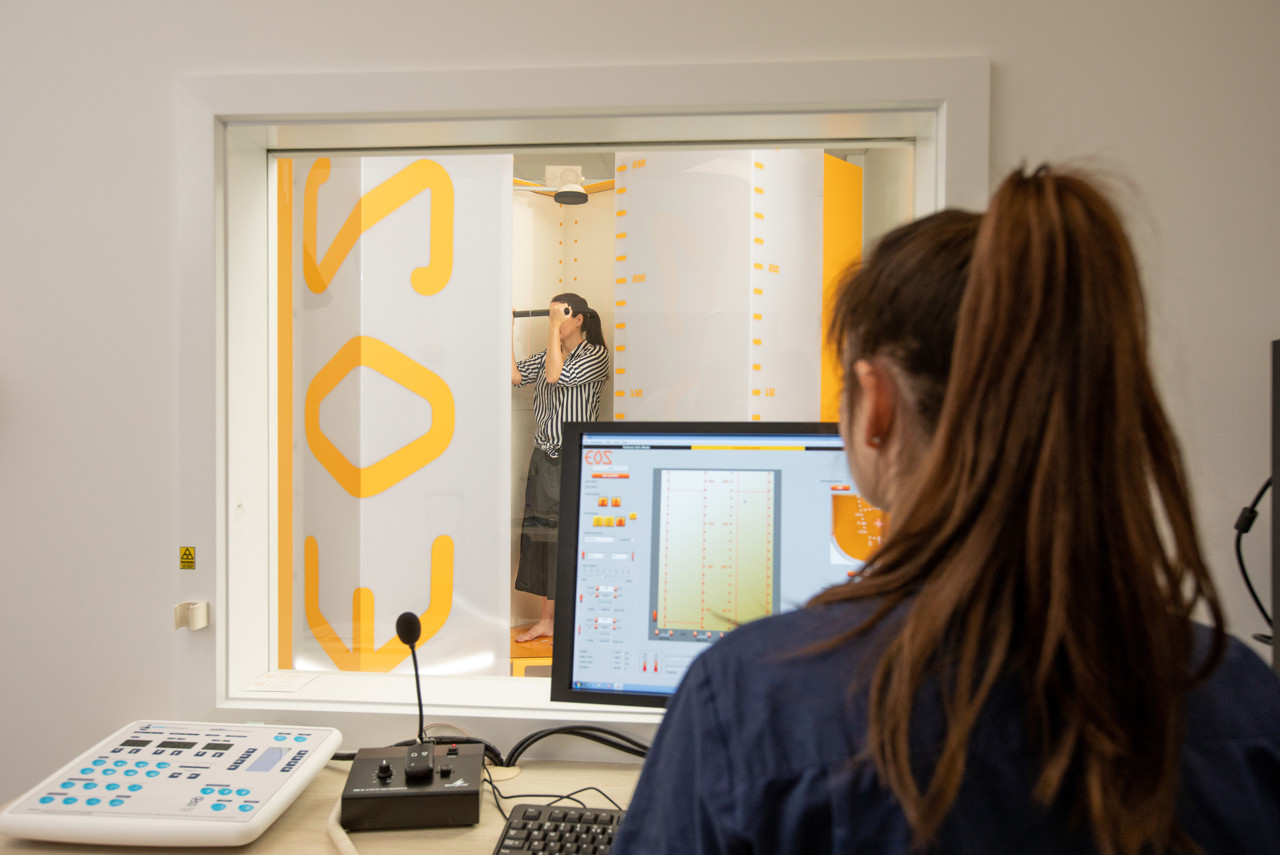EOS scans are typically taken in a standing, weight-bearing position, providing critical insight for diagnosing and managing conditions like scoliosis and other postural abnormalities. EOS is especially valuable in situations where patients want to minimise their exposure to radiation with low dose techniques and long-length, weight-bearing images are needed.
EOS Imaging FAQs
-
EOS scans are used to assess the musculoskeletal system, particularly your spine and limbs, in a weight-bearing OR sitting position.
This scan can be useful to diagnose and manage conditions like scoliosis, spinal deformities, leg length discrepancies, and pre and post-operative evaluations.
EOS is a low-dose imaging system that uses significantly less radiation than traditional X-rays or CT scans. This is especially important for children with paediatric scoliosis, a condition involving curvature of the spine or other conditions requiring regular or repeated medical imaging exams.
While EOS scans are typically completed in the standing position, patients can also be scanned in a seated position if requested by a referring practitioner. This can be especially beneficial for those with mobility issues or physical limitations that make standing difficult.
-
There is no preparation required for an EOS scan; however, it’s helpful to wear loose-fitting clothing without metal buckles, fasteners, or zips. In some cases, you will often be asked to change into a gown.
-
You will be asked to step inside the EOS system’s scanning booth and remain still. The scan is very short, around 15 seconds for children and 20 seconds for adults.
Two perpendicular X-ray scanners will move simultaneously, capturing a front and side view. The scanners travel vertically and pass from head to toe. The scanner will not touch you.
-
An EOS scan takes approximately 5 minutes to set up. The actual scan itself will take approximately 20 seconds.
-
Although EOS imaging does involve radiation, EOS is a low-dose imaging system that uses significantly less radiation than traditional X-rays or CT scans. This provides doctors with the safest imaging technology possible to monitor the progression of conditions such as scoliosis.
The automatic dose adjusters and detectors allow the scanner to tailor the radiation dose to the patient. It’s this specificity that guarantees a low-dose exposure, all the while maintaining image quality.
-
The results of your EOS scan will be sent directly to your referring health practitioner. Please ensure you book a timely follow-up appointment to discuss your results with them.
Watch: EOS - How does it work?
How much will it cost?
Fees for radiology procedures will vary depending on a variety of factors. We will advise you about the cost of your service at the time of booking but if you do have any questions, contact us and one of our team will be happy to help with your query. You can read more about our billing information here.
How do I access my images?
At Queensland X-Ray, we provide our patients with their images and results online. To access your images and results, you’ll need to register for an account when you visit one of our practices. If you’ve already registered, you can access the Patient Portal here.

